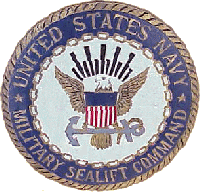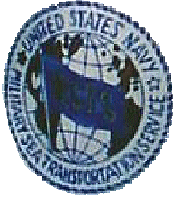 |
WEB SITE INTRODUCTION AND MSTS HISTORY |
 |
WEB SITE INTRODUCTION AND MSTS HISTORY |
| PURPOSE: The original purpose
of this web site, created in May 1997, was to display pictures, and other
memorabilia, for the viewing pleasure of military personnel and thier dependents who were
transported to or from Japan on certain ships belonging to MSTS - so many years ago. The
site was created for alumni who attended or taught at Yokohama American / Nile C Knnick
High Schools in Yokohama / Yokosuka, Japan. It also included other schools in that
area that were associated with the same school system, which began in 1946 and
ended in the mid 70's when movement of those personnel by ship ceased - "air"
being the new perferred method of travel. As the material needed for the site came flooding in from alumni of course, but from many others from all over the world, the site expanded in scope to include more ships and items than just those associated with sailing to/from Yokohama.
MSTS HISTORY [A laymans understanding]: For many years prior to World War II, War Department Troopships were under the jurisdiction of The Quartermaster General. In February 1942 President Roosevelt created the War Shipping Administration, and appointed Admiral Emory S. Land as its administrator. Previously, the procurement of available vessels for troop-carrying was a problem that constantly interfered with the plans of the Army and Navy. There was unintentional competition between the Army and the Navy even before Pearl Harbor to best meet shipping needs. In the appointment of Admiral Land as "shipping czar", it became evident that purposeful planning would come, and new concepts and strategies were developed which minimized many of those problems, yet permitted the services to continue to essentially operate their own fleets. Because of WW II, the acquisition of commercial ships, now that they could no longer travel upon the seas for commercial purposes; and a steady flow of new ships coming off assembly lines eased the problem somewhat. Many organizations to further improve the flow of troops were created during and just after WW II, including the creation of the Military Sealift Command; and MSTS, under the Chief of Transportation - US Army. Ships were assigned and reassigned constantly during WWII, and at it's peak, there were 65 large troopships in operation. These troop ships came from various sources; some were Navy owned, others Army-owned while - at least one Air Force ship; others were bareboat charter, sub-bareboat charter, or on loan. Many were manned by civilian crews, employed under Civil Service regulations and carried on the rolls at the home ports of vessels. Some military members of ships' crews were in an administrative capacity - and in other cases the crews were furnished by the US Coast Guard, while others were contractor employed personnel. Following WW II, the fleet was used initially to return military members home and at the same time was to be downsized. In 1946, when General Douglas MacArthur (Commander US Forces Far East and Military Governor of Japan) authorized "military dependents" to join their military spouse in Japan after WWII, the overwhelming majority who initially arrived were transported from CONUS by ships belonging to an element then of the Transportation Corps of the US Army. Other ships were also being used to transport military dependents to Europe. In 1949 all those ships, and others belonging to the military services became a part of a new organization, the Military Sea Transportation Service (MSTS). They were also augmented by commercial ships of the White Star , President, and Princess Lines and other shipping agencies to cope with the swarms of dependents moving overseas, and to satisfy troop movements to areas where the United States had become militarily involved -- like Korea. In the 60's and early 70's the mode of transportation for dependents and troops was changed to from the sea to military and commercial air, and thus began the decommissioning of those great ships, and the service itself. The Military Sea Transportation Service was formed on 2 August 1949, under a directive issued by Secretary of Defense James V. Forrestal, establishing the organization "in order to provide under one authority, control, operation and administration of ocean transportation for all agencies and departments of the National Military Establishment", the organization becoming active on 1 October 1949. A total of approximately 320 ships were transferred to the new command from the old Navy Transportation Service and the U. S. Army. Thirty-five of these ships had been controlled by the U. S. Maritime Commission, while thirty-seven (from the Navy Transportation Service) were commissioned Navy ships operated by Navy crews. The remainder of these vessels, comprised of auxiliaries of all types, were designated "U. S. Naval Ships" (USNS) and were operated by merchant marine civil service crews. The organization's name was changed to Military Sealift Command (MSC) in 1970. Undoubtedly, the most well-known of the ships operated by MSTS were the AP type troopships. From 1943, when the General and Admiral P-2 and General C-4 class transports began arriving on the scene to the end in 1973 when the Barrett class (USNS Barrett and USNS Upshur) returned from the far east to the United States for good. MSTS ships had transported millions of military personnel from all services -- including our POW's, and even foreign troops such as Indians, Indonesians, Republic of Korea (ROK) troops, etc during UN operations. Additionally, transported were many hundreds of thousands of refugees from Korea, Vietnam and China; and displaced aliens from Estonia, Hungary, Czechoslovakia, Poland, Romania and Russia. Six of every seven military servicemen sent to Korea during that conflict went by sea. Between 1965 and 1966 two of three of our fighting men in Vietnam arrived by MSTS transport. During the entire Vietnam War, over one-half million troops were transported by these ships. Nineteen MSTS transports were involved in the troop build-up in Vietnam with transatlantic AP's being redeployed to the Pacific to handle the huge sealift requirements. Gradually, increasing public acceptance of air travel combined with the advent of jet transports in large scale airlift service in the 1960's began the decline of troopship operations. The absence of any large scale conflict since the Vietnam war as well as drawdown of U. S. bases overseas resulted in the scrapping, lay-up, or sale of the remaining vessels. The last actual transportation of "troops" took place about 1968 during the Vietnam War, marking the end of a 70-year-old tradition of steamers transporting troops overseas. And with the retirement of the USNS Upshur and USNS Barrett in 1973 it also marked the end of the "troopship" era for the Navy. This resulted in the expansion of the Military Air Transport Service (MATS) as the primary mode of transportation of all military passengers, until a new policy permitted movement by commercial agencies as well. DEPENDENT PREPARATION FOR TRIP TO JAPAN: Many "dependents" were provided literature by DOD to assist them in preparing for their trip to Japan to join their "sponsor". Information was provided in several forms and included such things as what to expect when they arrived in Japan, to what to take and how to pack it - and of course such requirements as "shots" and medical checkups. You will discover on this web site several documents which discuss in detail "Dependent Orientation Booklets". It is believed that the first ship to transport dependents to Japan was the USNT Montery (The "Matson Run" as it was called), from Seattle to Yokohama in 1946 - this may be a picture of that ship. The last ships to carry dependents from Japan was the GEN Daniel I Sultan - departing Yokohama on 1 June 1966 and the USNS Barrett arriving in Oakland California on 15 August 1966. There is much confusion about the "Commissioning" of the ships as to the proper title (USAT, USS, USNS, USNT, etc). It is hoped someone will point out those errors so they can be corrected; and to identify additional ships in use for dependent travel to Japan - perhaps provide pictures. What survives of that great "fleet" from that era is a small group of the P2 transports comprising a ghost fleet from the past, and is visible today at Reserve Fleet anchorage's in Hudson River, NY; Beaumont, Tx; Olympia, Wn; Virginias' James River, and at Suisun Bay, California. It is not known how many of the "gray ladies" still exist. A few were put to use as "training vessels" and their status is also unknown. As a member of the AP Transportation Group so aptly said: "Just as was the case for those who sailed in the era of those great trans-oceanic passenger liners years ago, the millions of military personnel and dependents with these ships will nevertheless be long remembered by them since it is during those trips that associations invariably occurred at important junctures in their lives. Distances seemed greater, travelling times much longer, good-byes perhaps forever. Those of us who crewed these ships will never forget the pure seagoing experience which they afforded..... tough ships, tough men doing a tough job well." It cannot be exactly determined which ships did or did not carry dependents; nor, which ships did or did not travel in the Pacific Ocean to Japan - those which are believed to have carried dependents to / from Japan are indicated in the table below by the @ character - at least they operated in the Far East including Japan and Korea. Some of those ships operated in both the Atlantic and Pacific Ocean. The role of the U. S. Army and MSTS is confusing, and perhaps misunderstood. Despite references and common belief among many that the "Army" did have some involvement; historians indicate MSTS was totally a U. S. Navy function after about 1949, and the "Army's" responsibilities then were to operate the Ports of Embarkation (POE's). Hopefully in time this will all be sorted out and a more factual representation provided. Not all dependent travel by ship to/from the Far East was by MSTS or Commercial ships. For example, we know that in 1951 dependents returned to the ZI from Japan on board the Destroyer Escort vessel the USS Anderson - not to be confused with the General A.E. Anderson.
THE P-2 STORY [BY BILL POOLE] Two shipyards produced all the P-2 transports: The Bethlehem
To serve fully the requirements of the California-Orient route,
In 1946 the Adm ships were turned over to the Army, disarmed, manned by civilian crews and built a deck higher forward of the bridge. Being Army ships their names were changed from Admiral to General. The AP 121 became the Gaffey, the AP 123 the Buckner, the AP 124 the Patrick and the AP 125 the Walker. |
